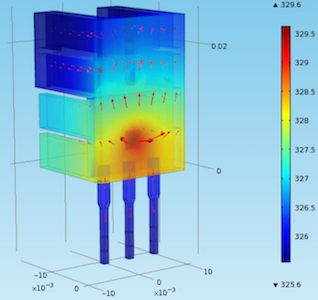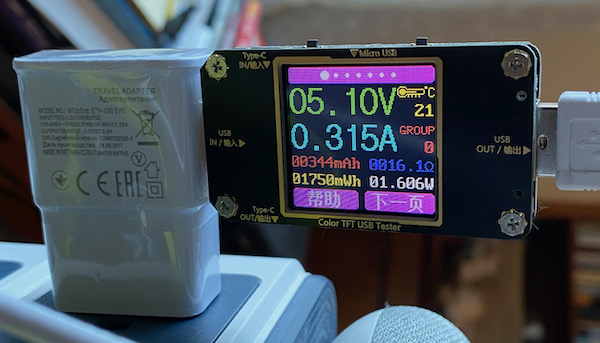This notebook contains material from cbe30338-2021; content is available on Github.
# IMPORT DATA FILES USED BY THIS NOTEBOOK
import os, requests
file_links = [("data/Model_Data.csv", "https://jckantor.github.io/cbe30338-2021/data/Model_Data.csv")]
# This cell has been added by nbpages. Run this cell to download data files required for this notebook.
for filepath, fileurl in file_links:
stem, filename = os.path.split(filepath)
if stem:
if not os.path.exists(stem):
os.mkdir(stem)
if not os.path.isfile(filepath):
with open(filepath, 'wb') as f:
response = requests.get(fileurl)
f.write(response.content)

Mathematical modeling is an integral part of process control. Process models come in many forms for different purposes, ranging from the barest of information about a process to sophisticated simulation involving millions of computational nodes.
Our purpose here is to demonstrate simple approaches that provide with insight about the qualitative nature of process dynamics. We show how to construct simple models from first-principles understanding of the processes, and how to fit those models to experimental data.
In this notebook we will:
We'll be begin by developing a model for one of the heater/sensor assemblies located on the Temperature Control Laboratory. The basic outline of an energy balaance is given by
$$\fbox{Rate of energy accumulation} = \fbox{Rate of energy in flow} - \fbox{Rate of energy outflow}$$In the absence of any material flows, changes in kinetic or potential energy, or any chemical changes, changes in sensible temperature is the only form of energy accumulation. If we assume the heater/sensor assembly is at single uniform temperature $T_1$, has mass $m$, and a constant and average specific heat capacity $\hat{C}_p$,
$$\fbox{Rate of energy accumulation} = m \hat{C}_p \frac{dT_1}{dt}$$For the purposes of this model we will lump the mass and specific heat capacity into a single parameter representing the overall heat capacity of the assembly
$$C_p = m \hat{C}_p$$The final expression for the rate of energy accumulation becomes
$$\fbox{Rate of energy accumulation} = C_p \frac{dT_1}{dt}$$Study Question: What are the units of $C_p$?
The flow of energy into into the heater/sensor assembly is controlled by variable $u_1$, the percentage of maximum available power to the heater. As a safety feature to protect both the user and the equipment, the maximum power available to the heater is set by an Arduino parameter $P_1$ specified as an 8 bit integer value between 0 and 255.
The actual power delivered to the heater is therefore proportional to the product $P_1u_1$
$$\fbox{Rate of energy in flow} \propto P_1 u_1$$where
$$\begin{align*} 0 & \leq u_1 \leq 100 \\ 0 & \leq P_1 \leq 255 \end{align*}$$An experimentally parameter $\alpha$ is introduced to establish the actual power delivered in units of watts
$$\fbox{Rate of energy in flow} = \alpha P_1 u_1$$Study Question: What are the units of $\alpha$, $P_1$, and $U_1$?
Study Question: How would determine $\alpha$ experimentally? What experiments would you perform? What equipment would you need in addition to that delivered with the Temperature Control Lab?
Energy flows out of the assembly primarily through convective heat transfer to the surrounding environment. At the relatively low operating temperatures of the device, the amount of radiative heat transfer is neglible.
$$\fbox{Rate of energy outflow} = U_a(T_1 - T_{amb})$$Parameters $U_a$ and $T_{amb}$ are the overall heat transfer coefficient and ambient temperature, respectively.
Study Question: Do you agree with the assumptions embedded in this equation? What other considerations might apply?
Study Question: What are the units of $U_a$?
Study Question: How can you determine $T_{amb}$ in experiments you do with the Temperature Control Lab?
Putting these terms together in the energy balance yields a first-order model for the response of the heater/sensor assembly on the Temperature Control Laboratory.
\begin{align} C_p\frac{dT_1}{dt} & = U_a(T_{amb} - T_1) + \alpha P_1u_1 \\ \end{align}As it happens, the parameter $\alpha$ exhibits a mild temperature dependency due to the intrinisic properties of semiconductors. The following experiment sets to P1 to a value of 200 in rgw arbitrary units of the Arduino hardware, then sets U1 to 50%. The power delivered to the device is measured after reaching operating temperature.
%matplotlib inline
import pandas as pd
t_expt = 600
data_file = "data/Model_Data.csv"
connected = False
if connected:
# run experiment and record data locally
from tclab import TCLab, clock, Historian, Plotter
with TCLab() as lab:
h = Historian(lab.sources)
p = Plotter(h, t_expt)
lab.P1 = 200
lab.U1 = 50
for t in clock(t_expt, 10):
print(t, lab.T1)
p.update(t)
h.to_csv(data_file)
else:
# download previously recorded data from repository
df = pd.read_csv("https://jckantor.github.io/cbe30338-2021/" + data_file)
ax = df.plot("Time", figsize=(10, 5))
ax.grid(True)
ax.set_title(f"Peak Temperature = {df['T1'].max()}")

Under these conditions, starting with an ambient temperature of 21 C, when the system reached steady-state the measured voltage was 5.10 volts with a current of 0.315 amps, or 1.61 watts, resulting in a peak temperature of 53 C
$$\alpha P_1 u_1 = 1.6 \text{ watts} \implies \alpha = \frac{1.6\text{watts}}{200 \times 50} = 0.00016 \frac{\text{watts}}{\text{units P1} \times \text{percent U1}}$$Study Question: What is the maximum power that could be delivered to the heater/sensor assembly?
We'll begin our analysis by investigating the steady-state response of this system to a steady-state input $\bar{u}_{1}$. At steady-state all variables are constant so $\frac{dT_1}{dt} = 0$, which leaves
\begin{align} 0 = U_a(T_{amb} - \bar{T}_1) + \alpha P_1\bar{u}_{1} \end{align}Solving for $\bar{T}_{1}$
$$\bar{T}_{1} = T_{amb} + \frac{\alpha P_1}{U_a}\bar{u}_{1}$$Study Question: In the cell below, write Python code to estimate the value of $U_a$.
Study Question: Using the results of this calculation, estimate the maximum acheivable temperature with this device.
In examining the response of the temperature control laboratory, we see the temperature is a deviation from ambient temperature, i.e.,
\begin{align} T_1' = T_1 - T_{amb} \end{align}For process control purposes, we are often interested in the deviation of a process variable from a nominal value. In this case the choice of deviation variable is clearly obvious which is designated $T_1'$. From the steady state equation we see
\begin{align} \bar{T}_1' = \bar{T}_1 - T_{amb} = \frac{\alpha P_1}{U_a}\bar{u}_1 \end{align}which is a somewhat simpler expression.
Let's see what happens to the transient model. Substituting $T_1 = T_{amb} + T_1'$ into the differential equation gives
\begin{align} C_p\frac{d(T_{amb}+T_1')}{dt} & = U_a(T_{amb} - (T_{amb} + T_1')) + \alpha P_1u_1 \end{align}Expanding these terms
\begin{align} C_p\underbrace{\frac{dT_{amb}}{dt}}_{0} + C_p\frac{dT_1'}{dt} & = U_a(\underbrace{T_{amb} - T_{amb}}_{0} - T_1') + \alpha P_1u_1 \end{align}we see several terms drop out. The derivative of any constant is zero, and see a cancelation on the right hand side, leaving
\begin{align} C_p\frac{dT_1'}{dt} & = - U_aT_1' + \alpha P_1u_1 \end{align}One last manipulation will bring this model into a commonly used standard form
\begin{align} \frac{dT_1'}{dt} & = - \frac{U_a}{C_p}T_1' + \frac{\alpha P_1}{C_p}u_1 \end{align}Study Question: Previously we estimated $U_a$ and $\alpha$ from steady-state measurements. Can $C_p$ be estimated from steady-state measurements? Why or why not?
A standard form for a single differential equation is
\begin{align} \frac{dx}{dt} & = ax + bu \end{align}where $a$ and $b$ are model constants, $x$ is the dependent variable, and $u$ is an exogeneous input.
For a constant value $\bar{u}$, the steady state response $\bar{x}$ is given by solution to the equation
\begin{align} 0 & = a\bar{x} + b\bar{u} \end{align}which is
\begin{align} \bar{x} & = -\frac{b}{a} \bar{u} \end{align}The transient response is given by
\begin{align} x(t) & = \bar{x} + \left[x(t_0) - \bar{x}\right] e^{a(t-t_0)} \end{align}which is an exact, analytical solution.
We now apply this textbook solution to the model equation. Comparing equations, we make the following identifications
\begin{align} T_1' \sim x \\ -\frac{U_a}{C_p} \sim a \\ \frac{\alpha P_1}{C_p} \sim b \\ u_1 \sim u \end{align}Substituting these terms into the standard solution we confirm the steady-state solution found above, and provides a solution for the transient response of the deviation variables.
\begin{align} \bar{x} = -\frac{b}{a}\bar{u} \qquad & \Rightarrow \qquad \bar{T}_{1}' = \frac{\alpha P_1}{U_a}\bar{u}_{1} \\ x(t) = \bar{x} + \left[x(t_0) - \bar{x}\right] e^{a(t-t_0)} \qquad & \Rightarrow \qquad T_1'(t) = \frac{\alpha P_1}{U_a}\bar{u}_{1} + \left[T_1'(t_0) - \frac{\alpha P_1}{U_a}\bar{u}_{1}\right]e^{-\frac{U_a}{C_p}(t-t_0)} \end{align}The following cell demonstrates use of these results to plot the transient response for a particular choice of model parameters.
The steady state analysis provided an estimate for the gross heat transfer coefficient $U_a$. Rerun this cell for different values of gross heat capacity $C_p$. Try to find a value that at least mimics the experimental response shown above.
%matplotlib inline
import numpy as np
import matplotlib.pyplot as plt
# parameter values and units
alpha = 0.00016 # watts / (units P1 * percent U1)
P1 = 200 # P1 units
Ua = 0.05 # watts/deg C
Cp = 6 # joules/deg C
U1 = 50 # steady state value of u1 (percent)
T_amb = 21 # deg C
# initial conditions
T1_dev_initial = 0
# steady state solution
T1_dev_ss = alpha*P1*U1/Ua
# compute the transient solution
t = np.linspace(0, 600)
T1_dev = T1_dev_ss + (T1_dev_initial - T1_dev_ss)*np.exp(-Ua*t/Cp)
# plot
fig, ax = plt.subplots(1, 1)
ax.plot(t, T1_dev + T_amb)
ax.set_xlabel('time / seconds')
ax.set_ylabel('temperature / °C')
ax.grid(True)
The following cell provides an interactive tool for 'tuning' the model to fit the experimental data. Work with the sliders to find good choices for each of the parameters.
%matplotlib inline
import pandas as pd
import matplotlib.pyplot as plt
data_file = "data/Model_Data.csv"
data = pd.read_csv("https://jckantor.github.io/cbe30338-2021/" + data_file).set_index("Time")[1:]
t = data.index
T1 = data['T1'].values
# parameter values and units
alpha = 0.00016 # watts / (units P1 * percent U1)
P1 = 200 # P1 units
Ua = 0.05 # watts/deg C
Cp = 6 # joules/deg C
U1 = 50 # steady state value of u1 (percent)
T_amb = 21 # deg C
def compare(Ua, Cp):
T1_dev_initial = 0
T1_dev_ss = alpha*P1*U1/Ua
T1_dev = T1_dev_ss + (T1_dev_initial - T1_dev_ss)*np.exp(-Ua*t/Cp)
T1_model = T1_dev + T_amb
fig, ax = plt.subplots(2, 1, figsize=(10,8))
ax[0].plot(t, T1, t, T1_model)
ax[0].set_xlabel('time / seconds')
ax[0].set_ylabel('temperture / °C')
ax[0].grid(True)
ax[0].text(200, 30, f'Ua = {Ua}')
ax[0].text(200, 25, f'Cp = {Cp}')
ax[1].plot(t, T1_model - T1)
ax[1].set_title(f'Sum of errors = {sum(abs(T1_model-T1)):0.1f}')
ax[1].grid(True)
plt.tight_layout()
compare(0.05, 8)
Study Question: By trial and error using the compare() function defined above, tetermine values for $U_a$ and $C_p$ that yield a good fit of the model to the data.
Study Question: Are you able to remove all systematic error? If not, why not?
Study Question: The sum of absolute errors is shown on the chart. Try to find values of $U_a$ and $C_p$ that minimize this error criterion. In your opinion, is that the best choice of model parameters? Why or why not?
Study Question: Does this solution make sense? The specific heat capacity for solids is typically has values in the range of 0.2 to 0.9 watts/degC/gram. Using a value of 0.9 that is typical of aluminum and plastics used for electronic products, what would be the estimated mass of the heater/sensor combination?
Study Question: Suppose we want to improve the model. Where should we go from here?
This notebook attempted to fit a first-order model of a heater/sensor assembly to experimental data. In the course of the fit, estimates were derived for parameters $\alpha$, P1, $U_a$, and $C_p$. From these parameter values, estimate a time constant.
Apply the techniques outlined in Section 2.2 for the estimation of time constants from experimental data. How does that value compare to the calculation in the first question?
One idea to improve the fit of the model to the data would be add an additional adjustable parameter. Suppose we assume $T_amb$ isn't measured. Create a new notebook. Based on the code cell above where the function compare is defined, create a new function called compare3 that takes accepts parameters $T_amb$, $Ua$, and $Cp$ and compares prediction to experimental data. By trial and error, find values of the three parameters that best 'fit' the data. Were you able to reduce the structural error in the model? Discuss your result.